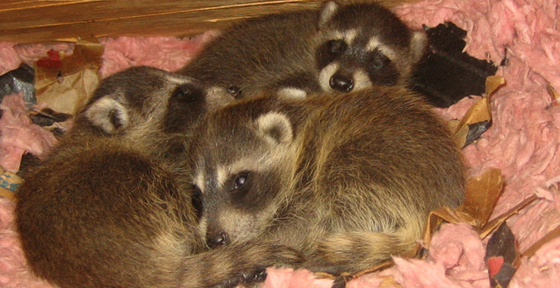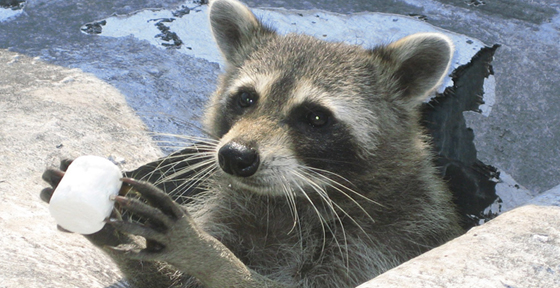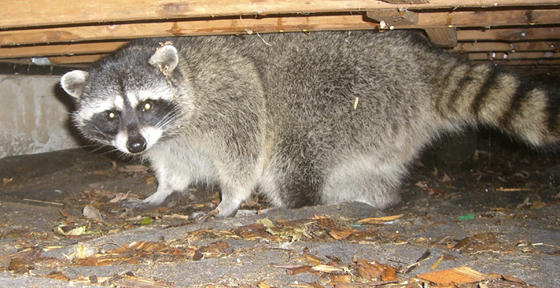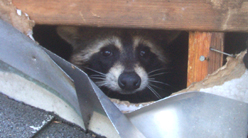
An adult raccoon in an attic is almost ALWAYS a female with a litter of young.

If you trap and remove the mother raccoon, these cute little guys starve to death!

Usually a problem with a raccoon is because there's a hole in your house or a food source.

Keep raccoons out of your attic or from under your house by sealing entry areas shut.
 Step-by-step instructions for solving a raccoon conflict, without resorting to ineffective and inhumane methods such as poison, lethal traps,
or cage trapping. Raccoon removal strategies for homeowners or pros.
Read more
Step-by-step instructions for solving a raccoon conflict, without resorting to ineffective and inhumane methods such as poison, lethal traps,
or cage trapping. Raccoon removal strategies for homeowners or pros.
Read more
Find a Local Rehabber: If you have found an orphaned baby raccoon, or an injured raccoon, you can bring them to a local wildlife rehabilitator.
Find a Local Wildlife Pro: If you can't solve the raccoon problem yourself, read here for tips on how to hire to right person to help you.
Learn Your Local Laws: Some aspects of conflict wildlife control may be subject to state or even federal laws. Find Help In Your Area


